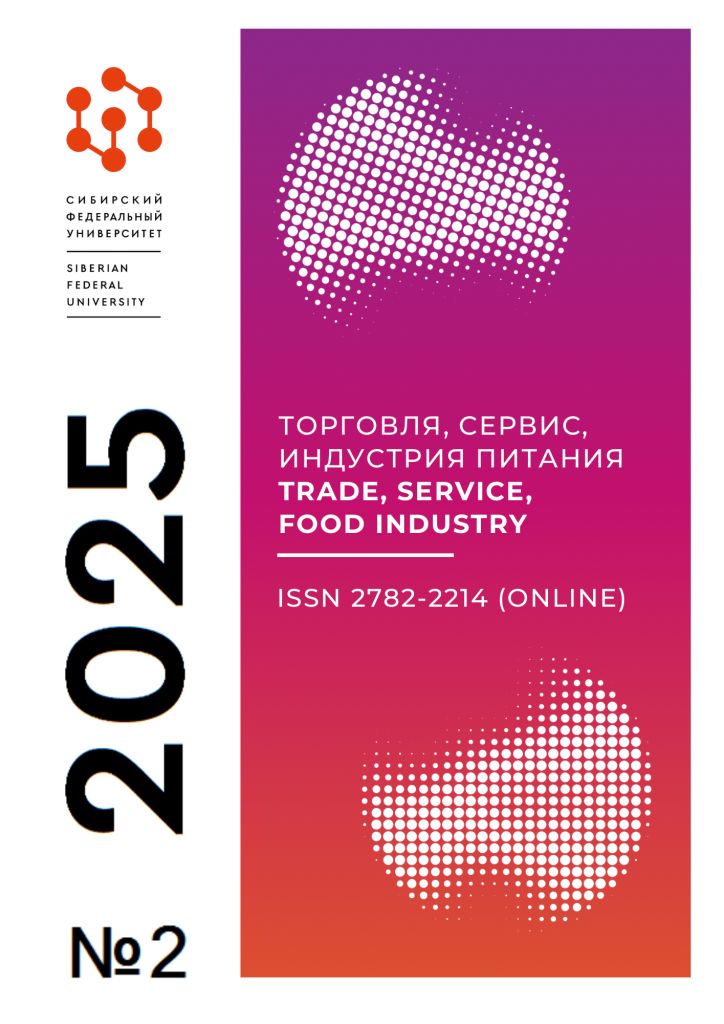Krasnoyarsk, Krasnoyarsk, Russian Federation
Krasnoyarsk, Russian Federation
Krasnoyarsk, Russian Federation
The uneven distribution of money supply between economic sectors dominated by households and significant role of non-financial organizations has been identified, which indicates the need to improve financial intermediation. The analysis showed a decrease in foreign currency deposits, indicating strengthening of the ruble exchange rate and increase of confidence in the national currency. The growth of the money supply and the increase in the level of monetization have been identified, combined with a reduction in the rate of circulation of money and the maintenance of high inflation at higher rates. The effectiveness of the banking system through the monetary multiplier has been evaluated and the need to balance the money supply with economic needs has been identified, while the anti-inflation measures are not effective.
monetary aggregates, currency circulation, monetary multiplier, inflation, key rate
1. Evshanov, S., Mengliev, I., Gadammilyoeva, S., Khudaizarov, S. (2024). Law of money circulation. Ceteris paribus, 2, 93–95.
2. Leonov, M. V., Zhemtsova, N. V. (2021). Formation of a system of monetary aggregates in the digital economy. Innovative development of the economy, 5(65), 160–171.
3. Lyubimov, N. A. (2022). Evolution of monetary forms: from commodity to digital money. Science of the 21st century: current directions of development, 1-1, 370–374.
4. Kosobryukhova, E. S., Tsvigunova, O. S. (2022). Cash Currency in the Digital Ruble Age. Current issues of modern economy, 4, 374–380.
5. Kuzmina, O. Y. (2022). The essence of digital money and its functions. Science of the 21st century: current directions of development, 1-1, 359–363.
6. Koshmina, A. S. (2023). The impact of the key rate on inflation in Russia. The Science Journal, 10(67), 45–52.
7. Berdyshev, A. V., Sopov D. K. (2022). Determination of the monetisation coefficient dynamics of the Russian economy and its impact on macroeconomic indicators. The News of the University, 9, 145–152.
8. Zhulyaev, Y. P., Agapov, I. A., Dikareva, I. A. (2020). The Money Multiplier in the Modern Financial Systems. Journal W. Economy. Management. Finance, 2(20), 332–338.
9. Bakieva, S. S. (2022). Evolution of money: from origins to cryptocurrency. The Journal of Eurasian Science, Vol. 14, No 2, 14.
10. Vasiliev, L. E. (2021). Money of the 21st century: evolution concept and essence. Economy. Business. Finance, 4, 11–16.
11. Gurkova, D. O. (2020). Current state and prospects of development of electronic payment systems in Russia. Young scientist, 28(318), 241–246.
12. Aliev, R. I., Gairbekova, M. I., Turkaeva, L. V. (2022). Money turnover and money circulation. Economics: Yesterday, Today and Tomorrow, Vol. 12, No 11A, 111–117.
13. Belotelova, N. P., Belotelova, J. S. (2023). Money. Credit. Banks. Moscow: Dashkov and Ko, 380.
14. Yegorov, D. G. (2022). Money is a sign. Economic science of modern Russia, 1, 7–16.
15. Kazimagomedov, Z. A., Atemova A.Z. (2020). Electronic money in the modern world. Economic research and development, 4, 36–42.








